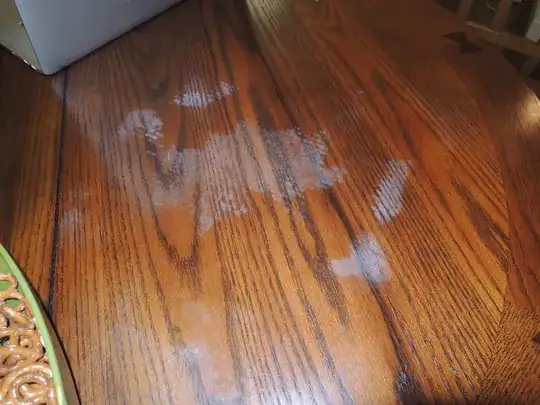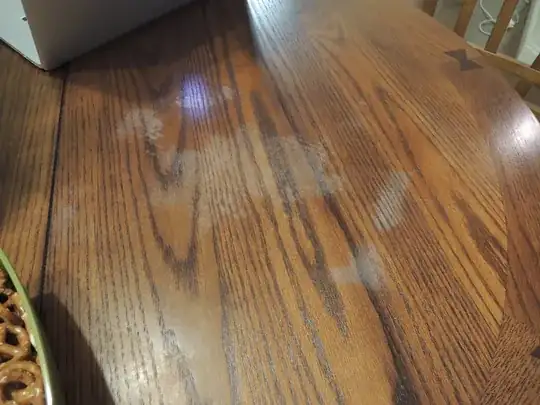I recently accidentally caused heat stains on our wood table by placing hot pizza boxes on it. You can see the evidence of it below.
When I googled for fixes for this I came across this website: [DIY – How To Remove White Heat Stains On Wood Table]
This website recommends doing this:
What did I do to fix the problem? While setting out the table, a relative gave me a tip: for the scorch marks, just take an iron and apply heat to the cloudy stains, they’ll disappear! If that’s too aggressive for you, no worries, I have some other ideas listed here as well.
First, here are the steps I took to remove them…
The first thing I did was wash the surface and dry it well. I took a clean, white cotton towel that wasn’t too thick and placed it over the scorch marks.
Taking an old iron set to high dry heat, I placed it on top of the towel, directly over the stain. I let it sit for close to a minute, checked, and nothing happened. The damage was still there.
- I kept reapplying the hot iron with no results, but once I turned the steam on–that’s when the magic happened. The marks literally disappeared. I couldn’t believe it and it defied logic to me–wouldn’t the steam cause more damage? All I know is that it worked. I was quick to wipe away any moisture and water on the surface after each treatment.
- Added: A few of the comments below mentioned finishing things off by wiping in a bit of olive oil after successfully using this trick.
Questions
- Will this really work?
- How can this fix the heat marks?
- What's the science behind why more heat + steam will "fix" marks that were initially caused by heat?

